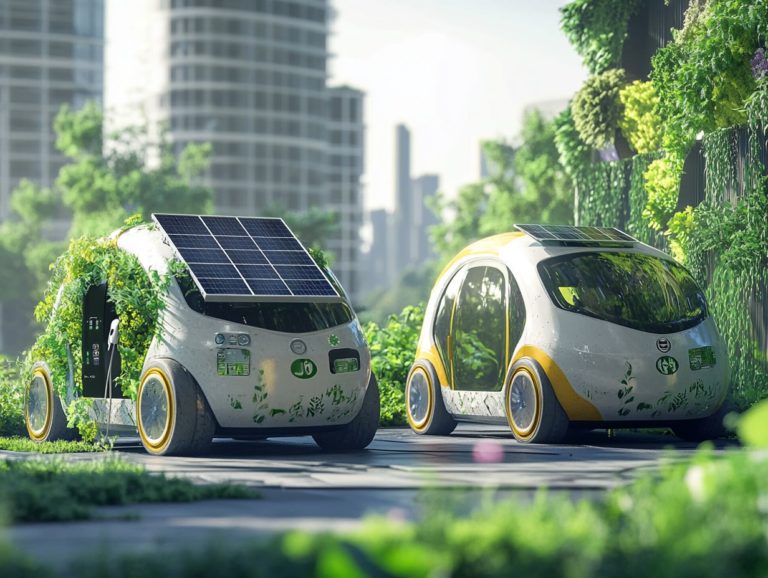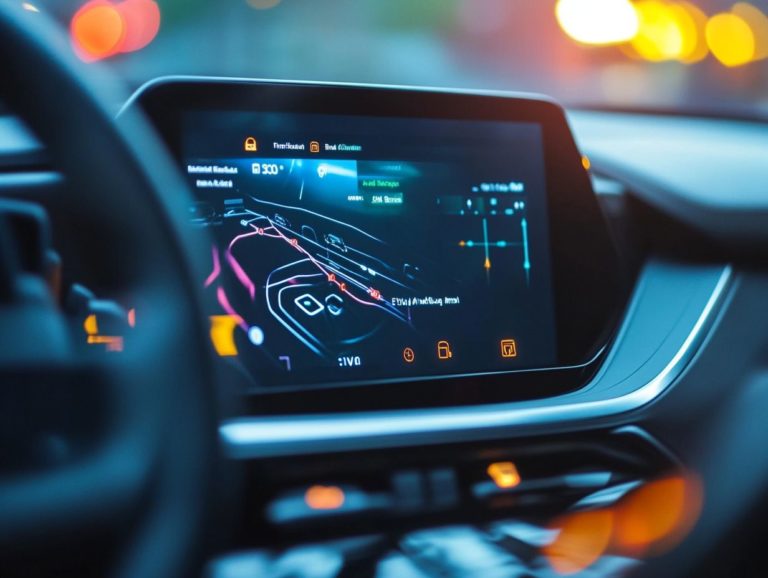Comparing Driving Modes: Eco vs. Sport
Driving modes in modern vehicles empower you to customize your road experience, maximizing both efficiency and performance.
Let s explore two exciting driving modes: Eco and Sport. Discover how Eco Mode saves you money while Sport Mode makes your ride thrilling!
Eco Mode can assist you in saving fuel and lowering emissions, but it has its limitations.
Sport Mode enhances performance and responsiveness, though it comes with its own set of drawbacks. We ll discuss the optimal times to utilize each mode, enabling you to make the most informed choice on your next journey.
Contents
- Key Takeaways:
- What are Driving Modes?
- Eco Mode: Benefits and Limitations
- Sport Mode: Advantages and Disadvantages
- When to Use Each Mode
- Frequently Asked Questions
- What is the difference between Eco and Sport driving modes?
- Can I switch between Eco and Sport modes while driving?
- Will switching to Eco mode save me money on gas?
- Does using Sport mode negatively impact my fuel efficiency?
- Is Eco mode suitable for all driving situations?
- Which driving mode is better for the environment?
Key Takeaways:
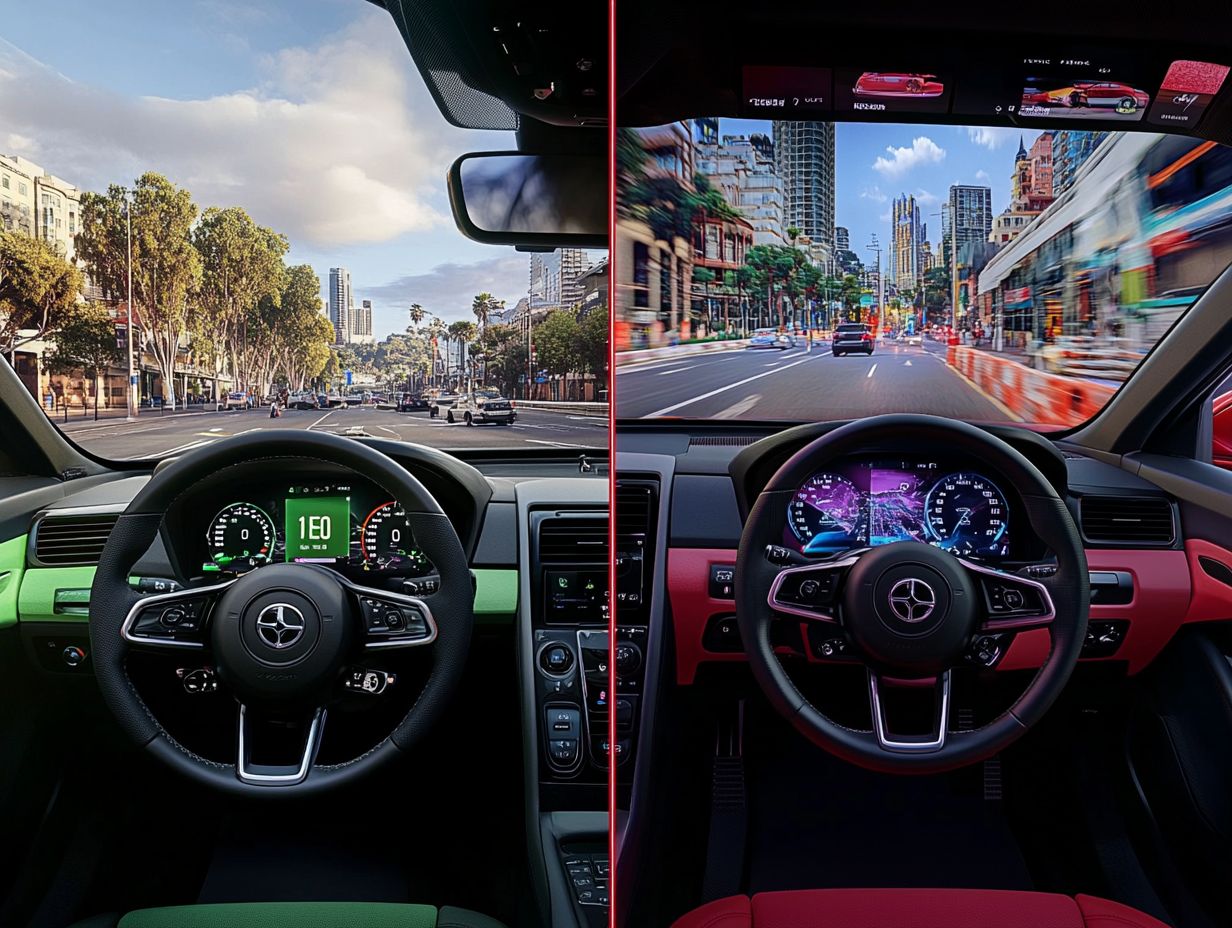
- Eco mode offers fuel efficiency and a smoother driving experience, but may reduce acceleration and responsiveness.
- Sport mode enhances performance and agility, but may consume more fuel and be less comfortable for everyday driving.
- Consider your driving needs, road conditions, and personal preferences to determine which mode is best for you in different situations.
What are Driving Modes?
Driving modes are specialized settings within your vehicle that empower you to fine-tune the car s performance based on your driving conditions and preferences.
These modes impact various aspects, such as throttle response, suspension stiffness, and traction control, ultimately elevating your overall driving experience.
Each driving mode is expertly engineered to optimize performance, offering tailored solutions for a range of scenarios, whether you’re navigating smooth city streets or conquering rugged terrain.
Controlled by the car’s computer, each mode meticulously adjusts critical parameters to ensure your vehicle operates at its peak, making every journey not only enjoyable but also efficient.
Eco Mode: Benefits and Limitations
Eco Mode is a driving setting that emphasizes fuel efficiency and minimizes emissions by fine-tuning various components and performance parameters of your vehicle.
By adjusting throttle input and shifting patterns, Eco Mode enhances your overall driving experience while significantly reducing your environmental footprint.
This mode proves especially advantageous for daily commuting, making it an essential choice for savvy drivers eager to save money!
How Eco Mode Affects Driving
Eco Mode significantly transforms your driving experience by adjusting throttle response and power distribution to prioritize fuel efficiency over sheer acceleration.
You might find that the throttle response becomes more gradual, reshaping your overall driving dynamics and fostering a smoother, steadier acceleration. This adjustment not only conserves fuel but also encourages more mindful driving habits.
In practical terms, when you engage Eco Mode, the vehicle’s engine management system recalibrates to deliver power in a manner that minimizes fuel consumption.
For instance, in urban settings where stop-and-go traffic is the norm, this slower throttle response enables you to maneuver through congested areas with greater control, significantly reducing the chances of sudden acceleration that can quickly drain your fuel reserves.
Vehicles like hybrids or compact cars, when set to Eco Mode, often see a marked improvement in miles per gallon during city driving, making them not only cost-effective but also kind to the environment.
Real-world examples illustrate that a family sedan, for instance, can boost its fuel efficiency by up to 15% when you actively use Eco Mode during your daily commutes, ultimately optimizing your driving experience.
Pros and Cons of Eco Mode
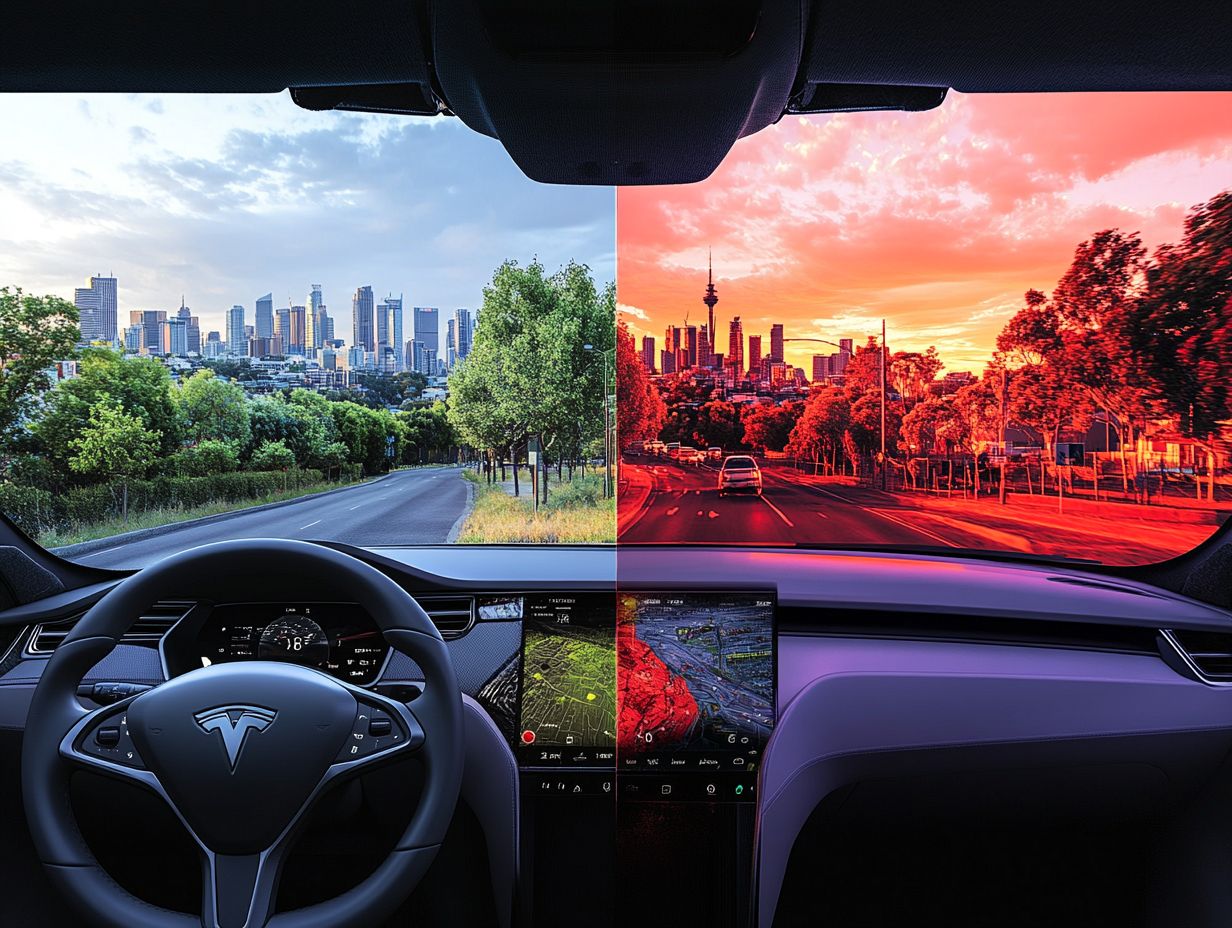
The advantages of Eco Mode are hard to overlook: enhanced fuel efficiency, reduced emissions, and a smoother driving experience make it a compelling choice for those who prioritize environmental responsibility.
However, it’s important to recognize its limitations. These include a less responsive throttle and slower acceleration, which might hinder performance in situations requiring quick maneuvers or overtaking.
Understanding these trade-offs helps you decide when to use Eco Mode.
Beyond the immediate perks, a notable benefit of Eco Mode is its potential to help you save up to 15% on fuel consumption, especially during urban commutes. Your individual driving habits like gentle acceleration and smooth braking play a crucial role in determining these savings.
For instance, while Eco Mode excels during steady highway cruising, it may falter in stop-and-go traffic or on hilly terrain where extra power is essential.
Ultimately, there will be times when you may need to prioritize performance over efficiency, particularly in emergency situations or while towing heavy loads.
Sport Mode: Advantages and Disadvantages
Sport Mode is designed to elevate your vehicle’s performance. It fine-tunes throttle response, suspension stiffness, and braking power for a dynamic and engaging driving experience.
This setting is a favorite among enthusiasts who crave enhanced handling and rapid acceleration, especially during spirited drives or track conditions.
While activating Sport Mode boosts responsiveness, it may also result in increased fuel consumption and a firmer ride factors that might not suit every driving scenario.
How Sport Mode Changes Driving Experience
Activating Sport Mode completely transforms your drive, making it an exhilarating adventure! Your vehicle becomes more responsive and agile.
This setting enhances throttle response and traction control, giving you that sportier feel you crave. The immediate feedback from the car allows you to enjoy a more thrilling ride.
The system fine-tunes its parameters to optimize performance, especially during cornering and acceleration. If you prioritize performance, these enhanced driving dynamics significantly elevate the joy of the journey.
When you activate Sport Mode, you’ll notice that throttle response sharpens, allowing for quicker acceleration. It feels utterly thrilling as your vehicle leaps forward with just a light touch of the pedal.
The suspension adjustments tighten the ride for improved handling and reduce body roll. This ensures that your car feels firmly planted as you navigate sharp turns.
The tweaks to traction control allow for a hint of slip, building confidence as you push your limits during track days or spirited drives. Each corner becomes not just a maneuver, but an engaging and enjoyable part of your driving adventure.
Benefits and Drawbacks of Sport Mode
The benefits of Sport Mode are significant! It offers enhanced vehicle performance, improved throttle response, and a driving experience that truly engages the senses especially for those who crave performance.
However, it s essential to weigh these advantages against potential drawbacks. These include decreased fuel efficiency and a harsher ride quality, which may not be ideal for your daily commute.
Take, for instance, vehicles like the BMW M3 and the Mercedes-AMG C63. Engaging Sport Mode unleashes thrilling power and agile handling, making them perfect for spirited drives along winding roads.
On the flip side, everyday sedans may struggle with the abrupt shifts and increased noise that come with a sportier setup. In heavy traffic or adverse weather, activating Sport Mode could result in a less comfortable journey, where a smoother performance is more desirable.
Thus, while Sport Mode undoubtedly has its fans, discerning drivers like you will appreciate the careful balance it demands between exhilarating performance and everyday practicality.
When to Use Each Mode
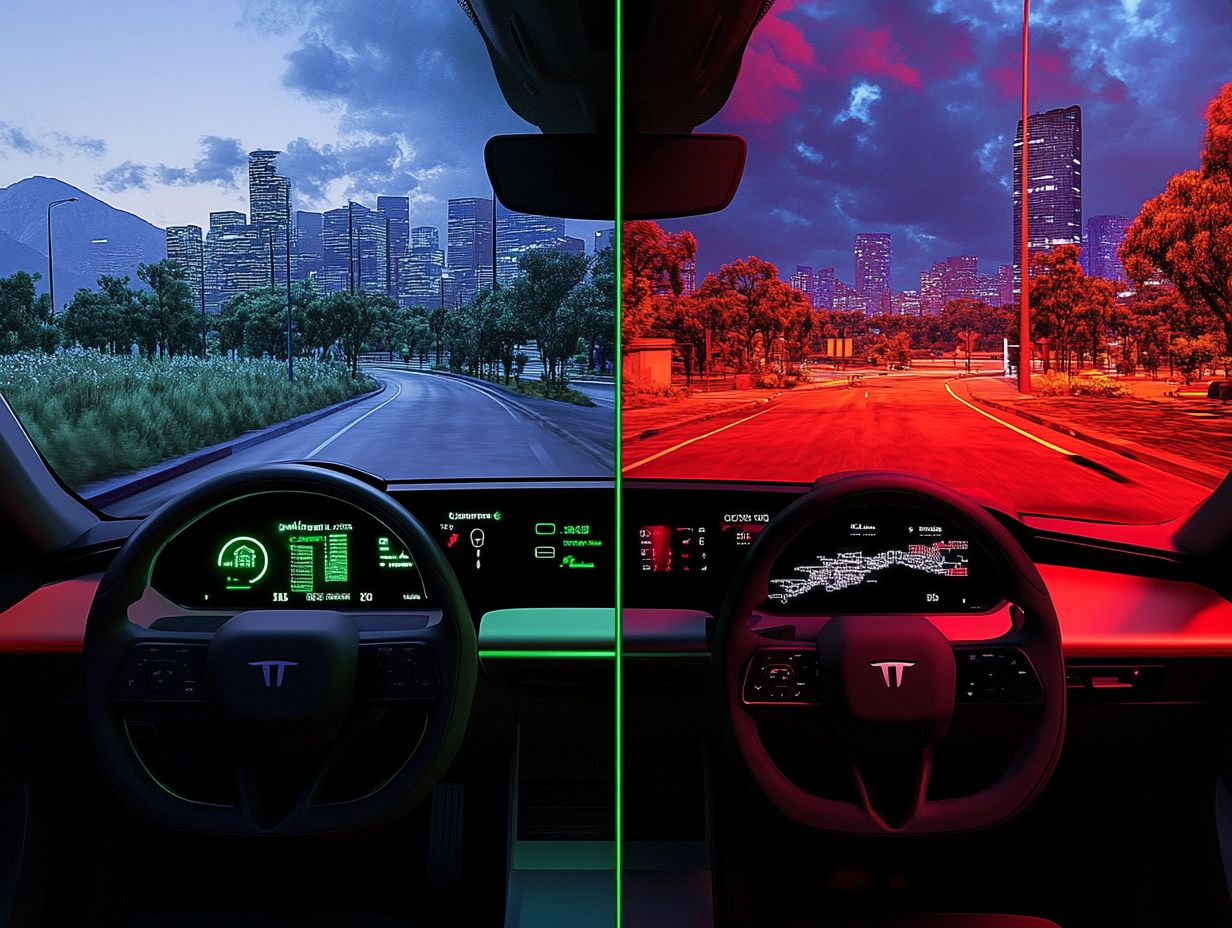
Selecting the appropriate driving mode is essential for getting the best out of your car based on the conditions and your personal preferences.
Do you prefer the efficiency of Eco Mode for your daily commute? Or do you enjoy the comfort of Comfort Mode during longer journeys? Maybe you crave the exhilarating performance of Sport Mode on winding roads. Knowing when to activate these modes can profoundly impact your overall experience.
Consider factors such as road conditions, traffic, and your own driving style when determining which mode best suits your needs.
Factors to Consider
When deciding which driving mode to engage, consider key factors like road conditions, your driving intentions, and the performance capabilities of your vehicle.
For instance, Eco Mode is perfect for urban commuting or long-distance journeys where fuel efficiency is crucial. In contrast, Sport Mode is ideal for spirited drives on winding roads or during track events.
Comfort Mode offers a balanced experience, especially on rough terrain. Weather conditions and your personal driving style also play significant roles in these decisions.
Audi, for example, incorporates advanced technology that adjusts suspension settings for a smoother ride in Comfort Mode while delivering immediate throttle response, meaning how quickly the car accelerates when you press the gas pedal, in Sport Mode. Jaguar provides exhilarating performance that matches your desire for speed and agility.
Understanding how these tailored modes respond to both the driving environment and your preferences ensures a customized and enjoyable experience as you navigate the road.
Frequently Asked Questions
What is the difference between Eco and Sport driving modes?
Eco mode prioritizes fuel efficiency, while Sport mode focuses on maximizing performance and acceleration.
Can I switch between Eco and Sport modes while driving?
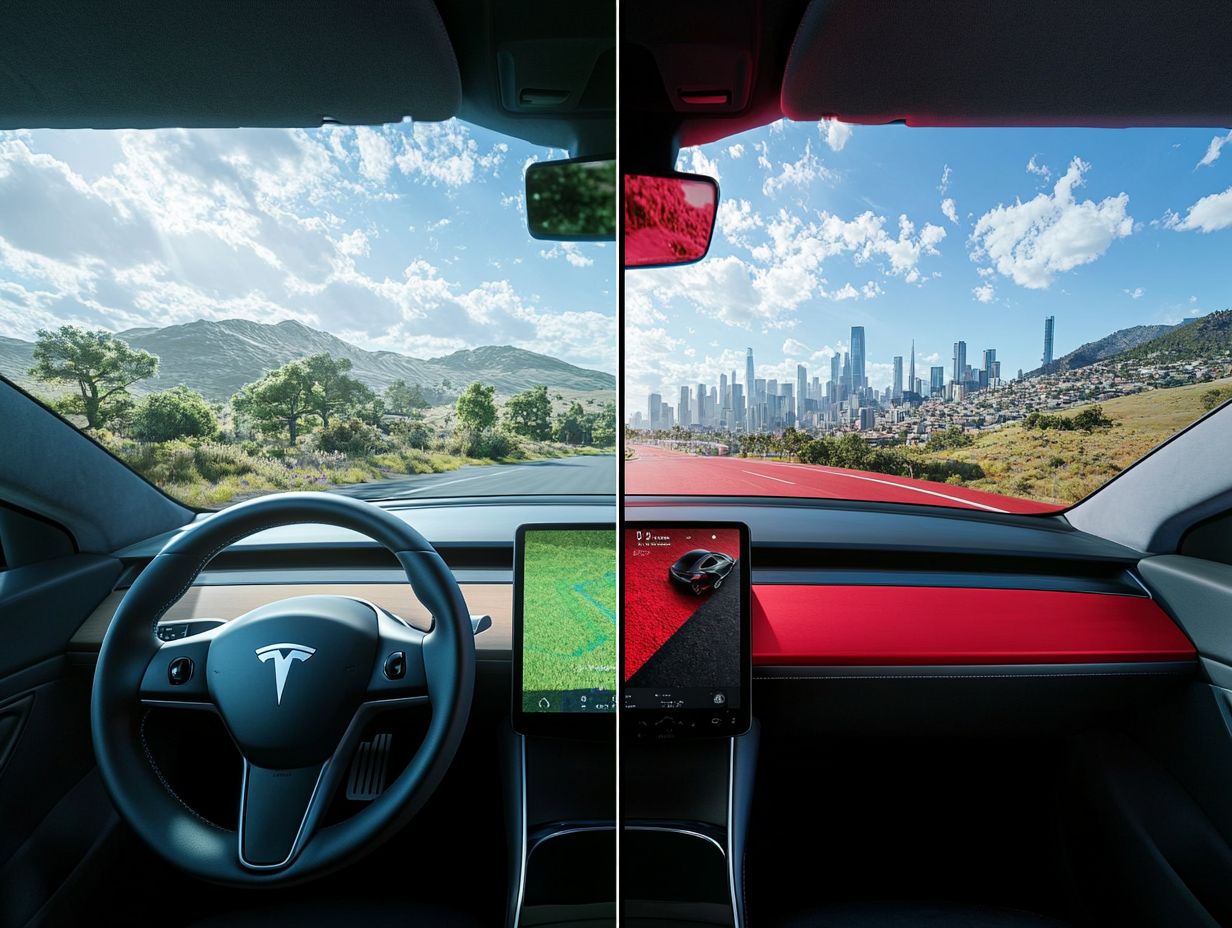
Yes, most vehicles allow you to switch between driving modes while on the road. However, it’s best to switch modes when the vehicle is at a complete stop.
Will switching to Eco mode save me money on gas?
Absolutely! Eco mode can improve your fuel efficiency by adjusting the vehicle’s throttle response and engine performance. This can lead to significant cost savings on gas over time. Try it during your next drive and see the difference!
Does using Sport mode negatively impact my fuel efficiency?
Yes, using Sport mode may decrease your fuel efficiency as it consumes more power and energy to achieve higher performance levels. It’s best to use this mode sparingly for short bursts of acceleration.
Is Eco mode suitable for all driving situations?
No, Eco mode may not be ideal for situations requiring quick acceleration or climbing steep hills. In these cases, switch to Sport mode for better performance.
Which driving mode is better for the environment?
Eco mode is considered more environmentally friendly as it reduces the vehicle’s carbon emissions. However, both modes have their benefits, and it ultimately depends on individual driving habits and preferences.

